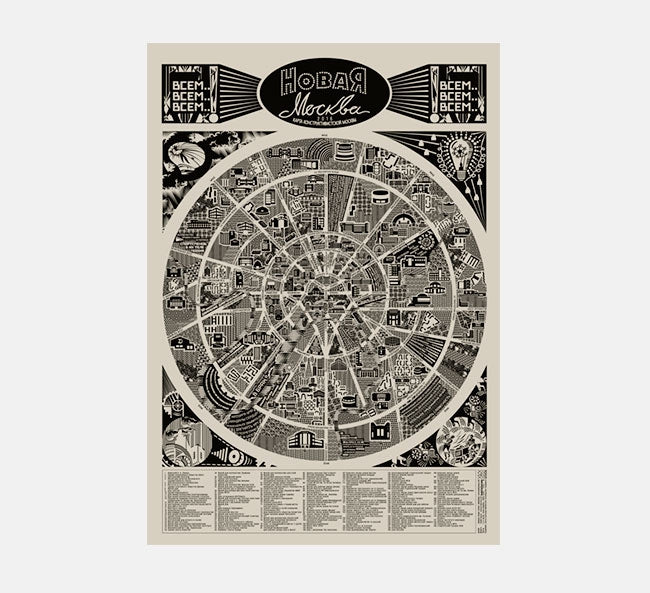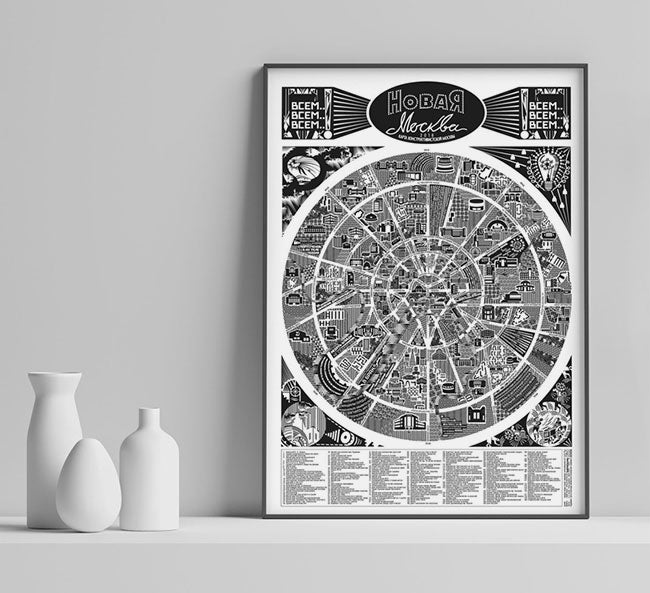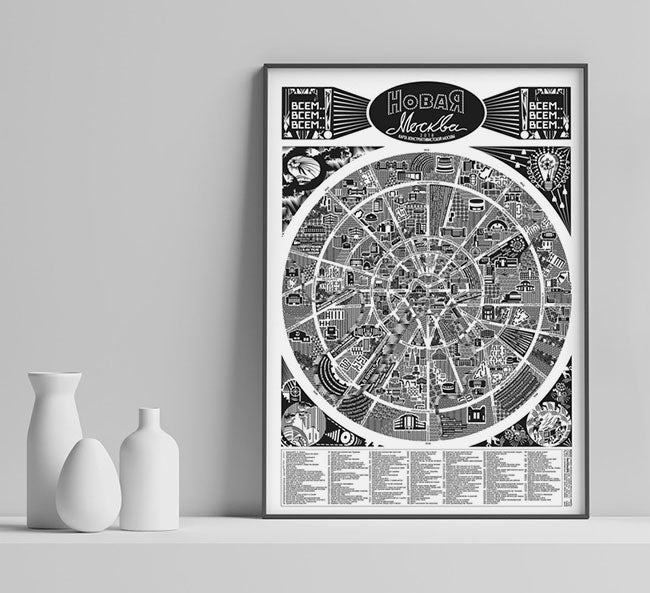beamalevich
Constructivist Moscow Poster - White
Couldn't load pickup availability
Poster map featuring Moscow's modern architectural heritage, with a directory and addresses of buildings, present and former, in majority from the Soviet period of the city.
The map features fonts created by famous Russian type designer Yuri Gordon, texts of one the most outstanding proletarian poets of early post-revolutionary Russia Alexei Gastev from the book of poems A Pack of Orders (1921) and two fabric designs: The New Village by R. Vasileva and Factory by S. Burylin from the collection of Ivanovo Regional Art Museum.
This is the model printed in a white background (more available).
Designed by Design Studio Baklažanas from Vilnius, Lithuania.
SPECIFICATIONS
Dimensions:
Length: 100 cm // 39.4 in
Width: 70 cm // 27.5 in
Language: Russian
Material: handmade silk screen print on high quality German paper
Font designed by Yuri Gordon
Limited edition
Winner of the Red Dot Communication Design Award 2017
(FULL INFORMATION BELOW)
--
The New Moscow map celebrates Moscow architectural avant-garde heritage including workers' clubs, schools, factory kitchens, garages, communal housing, factories, bathhouses and even the first soviet crematorium and columbarium. It features 180 most stunning examples of Constructivist architecture in Moscow, both world-famous buildings (from Melnikov House and the Narkomfin Building to Shukhov Tower and Lenin's Mausoleum) and less known residential buildings and constructivist quarters and settlements within the limits of Moscow Ring Road (MKAD).
Although the Constructivist movement produced many pioneering and unique projects and had a great impact on contemporary architecture during the Soviet period since late 1930s the Constructivist buildings were neglected and people nowadays don't appreciate this unique heritage, while it's one of the very few things Russians should be actually proud of. With this map we wanted to attract attention to the problem of demolition of the Constructivist architecture in Moscow and to show it's pure exceptional beauty.
The main reason why we created this map and also the main challenge was to focus on the problem of demolition of the Constructivist buildings in Moscow. Many Constructivist architectural masterpieces are either in ruins or under threat of demolition nowadays so the land could be sold to developers. Despite all the public protests and numerous petitions Russia's unique architectural heritage is destroyed by the authorities.
Besides these 180 leading examples of Constructivist architecture in Moscow we included into the map some remarkable elements of Russian industrial art from the 1920s and 1930s. The four roundels refer to Soviet textile and porcelain design of 1920-1930 and their propaganda capacities celebrating industrialization, electrification, collective farming and aeronautics, announcing an era of a new type of human, trained by the overall mechanization of everyday life. Some of the patterns we used celebrate the work of Russian designers Lyubov Popova and Varvara Stepanova who helped pave the way for all modern day graphic designers as they created art with a purpose in hopes of bettering the society in which they lived.




